Due to the Tracer technology, tracking the point of maximum power, which changes during the day depending on weather conditions, takes place completely automatically, which ensures maximum energy and minimum hassle.
Can be a little difficult at first to set the battery type.
Highly efficient MPPT controller with electronic protection against reverse polarity, overload, overheating, short circuit. Pleasant appearance, informative LCD Display and ease of operation make this model the best choice for a small solar-powered system. The kit has all the necessary accessories.
MPPT
150 V
PV Over Current/power
PV Short Circuit
PV Reverse Polarity
Night Reverse Charging
Battery Over Voltage
Battery Over Discharge
Battery Overheating
Controller Overheating
TVS High Voltage Transients
LCD Display, 12V/24V/36V/48V auto identifying system voltage, 4 type load Timer, Auto control system, Real-time energy recording and statistical function, Error LED indicator
6.45 x 7.28 x 4.69 inches
Amazon's 30-day return policy
Using the RS232 port, you can connect the BT-1 Bluetooth module to the device for further pairing with the Renogy BT smartphone app, which will take the controller to a completely different level.
Terminals are hard to get tight on the wire.
Renogy Rover Solar Charge Controller is an innovative device that works according to a high-precision algorithm with 99% hit. In addition, thanks to the self-diagnosing system, the operation of the device will be stable. You will see error notifications and other notifications on the screen.
MPPT
150 V
Reverse polarity
Overcharging
Over-discharging
Overload
Short-circuiting
Reverse current
LCD screen and multiple LED indicators, 12V/24V/36V/48V DC auto identifying system voltage, Features diverse load control, RS232 port, Renogy BT smartphone app compatible, self-diagnosing system
11.22 x 8.07 x 3.66 inches
1 year material warranty
On the front panel there is a screen with color PV / Battery / Load indicators, as well as two 5V DC USB ports, which will make it possible to recharge your devices.
Manual is a little hard to understand.
The EPEVER mppt 40a controller is a practical device that optimizes the process of charging from solar panels, increasing the battery life. Computer software, as well as a mobile app for real-time monitoring and changing the necessary parameters are included.
MPPT
100 V
PV Over Current/power
PV Short Circuit
PV Reverse Polarity
Night Reverse Charging
Battery Over Voltage
Battery Over Discharge
Battery Overheating
Controller Overheating
TVS High Voltage Transients
LCD screen and multiple LED indicators, 12/24 V DC auto voltage, Real-Time energy statistic function, PC software support, Moblie APP compatible, Dual 5V DC USB output interface, COM port-RS485 interface
10.1 x 7.2 x 2.6 inches
Amazon's 30-day return policy
The die-cast aluminum housing ensures stable controller operation even in extremely bad weather conditions, increasing system reliability and efficiency.
Display panel has very small characters, may be hard to read.
The OOYCYOO Solar Controller is designed to efficiently and safely charge the battery from the solar panel. The device is endowed with a number of protective functions that ensure reliable, high-quality and stable operation of the entire system for many years.
MPPT
150 V
Reverse polarity
Overcharging
Over-discharging
Overload
Short-circuiting
Reverse current
LCD screen and multiple LED indicators, 12/24 V DC auto voltage, 40/60/80/100A Solar Panel Charge Regulator, Dual USB 5V/2A Output for phone charging, self-diagnosing system
2.9 x 7.48 x 7.87 inches
Amazon's 30-day return policy
You can track both the current state of the system and view statistics with Multiple load control modes. 1 year storage of charging data is provided.
The center LED is rather dim.
The PowMr Solar Charge Controller works in accordance with dual-peak or multi-peak technologies for tracking maximum charge, which makes it extremely efficient. At the same time, 4-stage charging optimizes battery performance.
MPPT
100 V
Input power limiting protection
Battery reverse connection protection
Photovoltaic input side too high voltage protection
Photovoltaic input side short-circuit protection
Photovoltaic input reverse-connection protection
Load overpower protection
Load short-circuit protection
Reverse charging protection at night
TVS lighting protection
Over-temperature protection
LCD screen and multiple indicators, 12/24 V DC auto voltage, stage charging ( Bulk, Boost, Float, and Equalization), Temperature compensation, Real-time energy recording and statistical, limited current charging mode, work with Bluetooth module
11.65 x 9.09 x 5.2 inches
Amazon's 30-day return policy
This site is a free online resource that strives to offer helpful content and comparison features to its visitors. Please be advised that the operator of this site accepts advertising compensation from certain companies that appear on the site, and such compensation impacts the location and order in which the companies (and/or their products) are presented, and in some cases may also impact the scoring that is assigned to them. The scoring that appears on this site is determined by the site operator in its sole discretion, and should NOT be relied upon for accuracy purposes. In fact, Company/product listings on this page DO NOT imply endorsement by the site operator. Except as expressly set forth in our Terms of Use, all representations and warranties regarding the information presented on this page are disclaimed. The information which appears on this site is subject to change at any time. More info
EPEVER 60 Amp
Great Solar Power Starter Kit
Setting up a solar power system can be quite confusing at first. Being aware of all of the different parts of a system that you need to purchase, and then connecting them all together correctly is a challenge for anyone who has never done such a thing before. When researching the different parts that are required, the central one, that of a solar power controller, is the most confusing at all. That is why the EPEVER 60 Amp MPPT Charge Controller with LCD Display is definitely one of the best choices for first-time users, or even those who are more experienced with such systems. This solar power controller includes all of the parts that you need to get your solar power system off the ground, minus of course the solar panels and batteries. Everything else you need, though, is included in this set.
First off, it should be worth noting what this solar power controller brings to the table in terms of its capabilities. This controller is a 60 Amp unit that is able to handle a full solar power setup, with easy to use controls to let you configure and monitor it. On top of that, the controller includes loads of protections against the various different problems that can often plague a solar power system, including reverse polarity, overload, overheating, short circuits, and many others, and its total power efficiency helps ensure that you will get the absolute best out of your whole solar power system.

Automatic Efficiency Control
One of the biggest problems with any solar power system is in managing its total efficiency, which is quite important to any system. Included in this controller is the Tracer technology, which is able to track the total point of maximum power during the day and in turn ramp up the system's overall ability to charge the batteries from that power. It is also able to detect changes in the weather and the amount of sunlight and automatically adjust itself in order to get the best charging capabilities possible. Furthermore, the ability of its battery temperature compensation function to track the temperature of the battery and adjust its provided power input greatly helps in extending the overall lifespan of your solar system.
Setting up the controller can be a little confusing at first, as is generally normal with most solar power controllers, especially when it comes to setting the battery type. However, a little perseverance with this will help anyone with coming to grips with the needed settings, and once everything is setup properly, you shouldn't have to make continuous adjustments to the system, as the controller will handle that for you. Overall, those who are looking for a high-quality solar power controller to handle their solar energy system will find everything they need in this model.
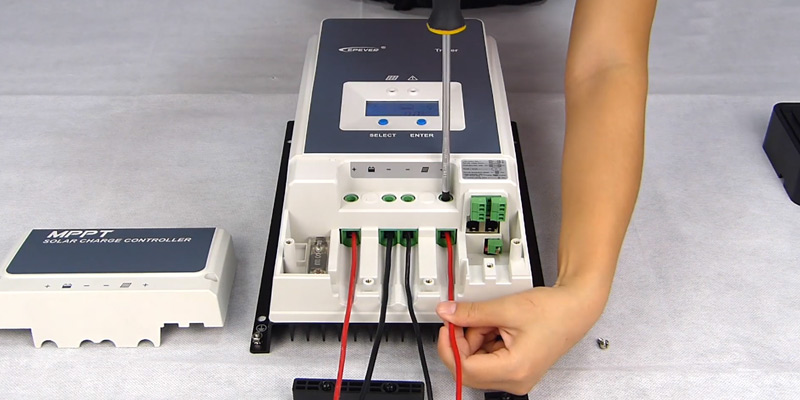
Additional Info
| Last updated price | $272.99 |
| Stock | In stock |
| ASIN | B07J2GJJK4 |

Renogy Rover 60 Amp
High Precision Efficiency
The telltale mark of a good solar power controller is in how efficient the device is in managing the energy collection and output of the entire system. Devices that are not very efficient mean that you are missing out on getting the best out of your total system, wasting much of the natural sunlight that is provided. The Renogy Rover 60 Amp MPPT Solar Charge Controller with LCD Screen, however, doesn't waste much energy at all. In fact, this is one of the most efficient solar power controllers that we have seen. Thanks to its high-precision algorithm, this controller gives you up to a 99% hit, meaning that there is virtually no waste of the energy collected or output in your entire system.
In fact, this controller seems to have been specifically built to give you the best possible usage out of all of the devices in your solar power system. This controller is able to achieve a peak conversion efficiency of 98%, it can automatically detect your DC system voltages ranging from 12V to 48V, and it is even capable of charging over-discharged lithium batteries, making this particular unit a great choice for those who have had bad luck with a previous controller. Simply put, there is plenty here that makes this controller an attractive choice for both new solar power systems as well as existing ones.
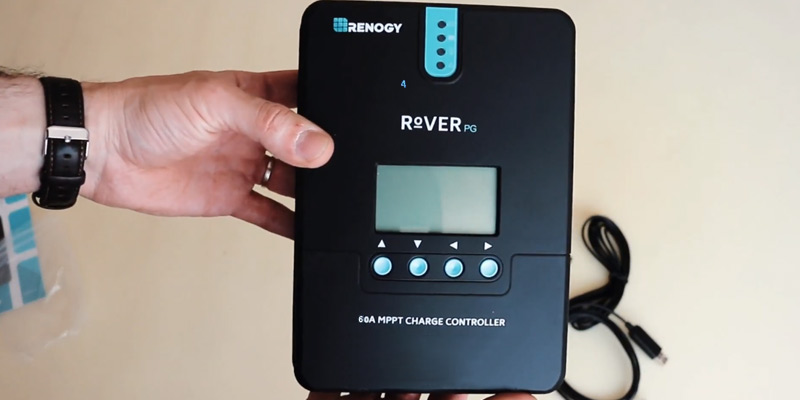
Wireless Monitoring
One of the pains of maintaining a solar power system is in the constant monitoring that many owners may be required to do. This is often a pain because most people want to install their solar controller in an out-of-the-way location, often hiding it behind a panel or furniture, which in turn means it can be hard to get to. With this model, though, you can leave such worries behind. The system includes an RS232 port, to which you can connect the BT-1 Bluetooth module, which in turn lets you monitor the system through the Renogy BT smartphone app. This lets you put the controller in virtually any location you would like without having to worry about needing to access it constantly.
In case you are unable or unwilling to use the wireless monitoring feature, though, you can still monitor the device through the included LED screen and indicators. Setting up the system is about as easy as it gets for such devices, although users should take note that the terminals do make it a bit difficult to get the wires tightly connected. Even so, the whole setup process shouldn't take much time, as all of the connectors are easily marked so you won't have to guess where different wires should connect. All told, this highly efficient solar power controller is a great choice for anyone, regardless of their specific system.

Additional Info
| Last updated price | $666.99 |
| Stock | In stock |
| ASIN | B07H7ZMFYB |
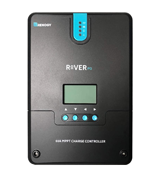
EPEVER 40A
Practical Solar Charge Controller
Not everyone needs a device that is oozing with features, and this is especially true of solar charge controllers. As these devices are meant to take care of an extremely important job, what is most needed is one that is capable of handling its primary job in the most efficient manner possible without anything else getting in the way. This is exactly what you get with the EPEVER 40 Apt MPPT Solar Charge Controller + MT50 Remote Controller Kit, an extremely practical controller that does its job while getting out of your way.
That's not to say that there isn't much to this unit, though. It does have plenty of features that all help aid its primary mission of providing you with highly efficient and stable solar energy. The device is programmed to provide a highly optimized charging and collecting environment, ensuring that as much solar energy as possible is collected while also charging your batteries in an efficient manner, helping to increase battery life. The controller is compatible with seven different battery types, including various lithium types and even Gel, Flooded, and Lead-acid User, so you shouldn't have to worry about this unit not being compatible with your existing batteries.
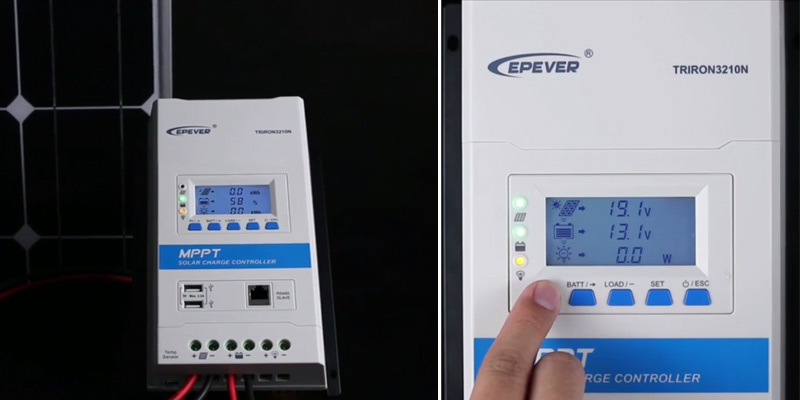
Monitor With Ease
Since solar power systems can be rather complicated, it's often necessary for users to keep constant tabs on the status of the system in order to ensure that it is working at peak efficiency. With the EPEVER 40 Apt MPPT Solar Charge Controller, this is thankfully an easy task. The LCD display on the front of the unit is one of the better ones we've seen, as it is large and highly informative, so you won't have to dig through the settings to find the information you need. For those who like to hide their solar charge controllers away from view, this system includes wireless capabilities, letting you monitor the status of your system through the Android app or PC software.
One nice feature with this particular controller that we don't often see is the inclusion of two 5V DC USB ports, giving you a handy option for recharging your devices rather than having to use up a precious power outlet. The controller is also compatible with a range of various devices, including display and interface modules, all of which can help you get the most out of your solar system. The manual for the controller is a bit less than clear about some things, but the controller itself is relatively straightforward to setup and operate, so this shouldn't be much of an issue. All things considered, this solar charge controller from EPEVER will prove itself to be a practical controller of anyone's solar energy system.

Additional Info
| Last updated price | $199.30 |
| Stock | In stock |
| ASIN | B07NVDJFD4 |
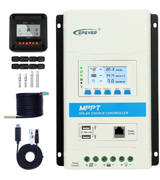
OOYCYOO P60
Reliable Solar Power Management
Setting up a good solar power system can be a challenge, as there isn't any all-encompassing kit that gives you everything you need. That means that it takes a lot of research into each individual component to make sure you are getting the most reliable and most efficient part possible. This is especially true of the solar charger controller, the centerpiece and central hub of any solar power system. Above all other features, what is needed is a controller that is both extremely reliable as well as offering peak efficiency with managing your solar system. The OOYCYOO P60 MPPT 60amp Solar Controller gives you both of these aspects, giving you exceptional performance and efficiency while guaranteeing reliable operation.
What helps make this solar charge controller so reliable is the number of protections that are built-in to the unit. In addition to the typical protections that you will find in controllers such as for overload and short-circuits, this device includes protection against reverse polarity, reverse current, overcharging, and over-discharging, something that can commonly happen with solar charge controllers. All of these protections add up to ensure extremely reliable operation of the device for many years, giving you an extremely stable hub for your solar system.
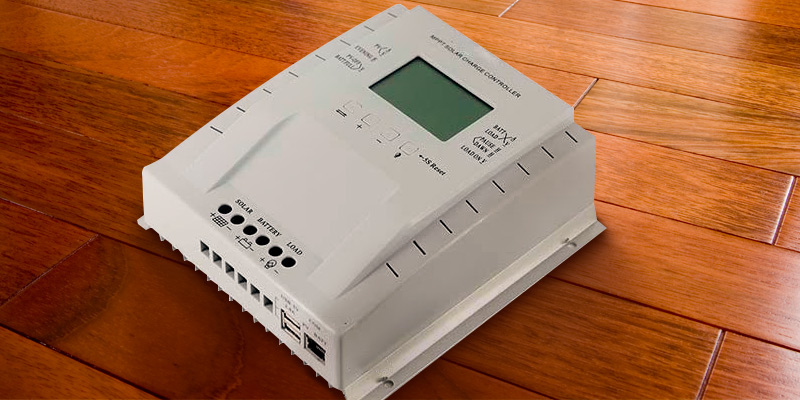
Sturdy Construction
Along with the number of protections built into this unit, you will find that the construction of this controller also adds to its stability and reliability. The die-cast aluminum housing provides an extremely strong and durable protective layer for the controller, helping to keep it well-protected against any hazards that might threaten such a device. This high level of protection also gives you a great amount of flexibility in where the controller can be mounted, being well-suited for mounting either inside or outside of the home. Even extreme weather conditions won't be enough to take away from this device's reliability.
Of course, not everything comes down to just reliability with a solar charge controller. Efficiency is also paramount, as you want a controller that can get the best and most efficient charging of your batteries. Thankfully, this device provides extremely efficient operation, letting you get the most out of your setup. Installing the device is about similar to other models, as well as its configuration. However, it should be noted that the LCD display on the unit has very small characters and may be hard to read for some people. Having said that, the display does give you a wealth of information, making it easy to find the information you need in order to properly monitor the system. In the end, the high level of protections offered in this device makes it a great choice for those who value reliability above all else.
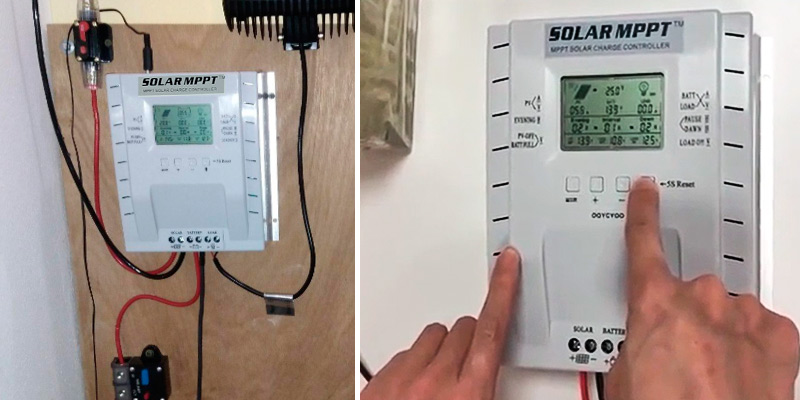
| Last updated price | $99.99 |
| Stock | In stock |
| ASIN | B07MKP5SQJ |

PowMr 40 Amp
Budget Solar Charge Controller
One thing that people learn pretty quickly about solar energy systems is that the upfront cost for putting one together can be quite costly. Between the solar panels, batteries, and even the solar charge controller, people often find their costs skyrocketing once they decide to put together a system. However, not all quality solar energy products are expensive, and the PowMr 40 Amp MPPT Charge Controller with LCD Display is a good example of that. This solar charge controller contains a high degree of efficiency and functionality but in a very affordable price, letting you put more money towards the more expensive items necessary for your solar energy system.
The low cost of this controller doesn't mean that it is lacking in functionality, however. This system works in conjunction with dual peak and multi-peak technologies to help track the maximum charge for your batteries, giving this system peak efficiency. In addition, the system utilizes 4-stage charging, which helps to optimize battery performance, thus letting you get the best out of whichever batteries you are using. The high efficiency of this system means that you aren't wasting any energy, so you get maximum performance out of your whole system.
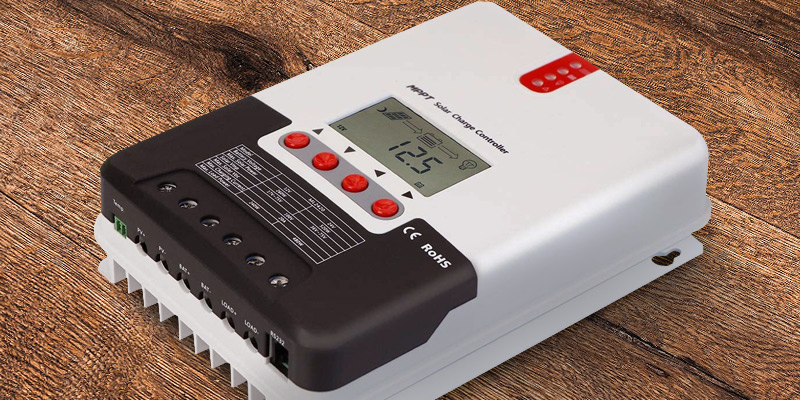
Easy Tracking
Any good solar energy system for the home should allow for easy tracking and monitoring of the devices, and this controller helps make it as easy as possible. The controller includes an LCD display along with indicator lights that gives you the information you need at a glance, so you won't have to dig through settings in order to keep tabs on your solar energy system. In addition, this unit also provides wireless monitoring through the included Bluetooth functionality, which pairs with the appropriate app for your Android or iOS mobile device, letting you monitor the system without having to have physical access to the controller. The app even includes charging data for up to 1 year, which lets you fine-tune your solar energy system in order to get the best efficiency possible.
This controller also maintains maximum compatibility with various solar energy system components, including various battery options as well as a variety of solar panels and connectors. A variety of protections are also included in the unit, helping to keep the device working efficiently and protecting from various common electrical problems, including high voltage and overload protection. With all of the capabilities provided in this affordable solar charge controller, this product will be a great choice for anyone who needs to build their solar energy system on a budget.
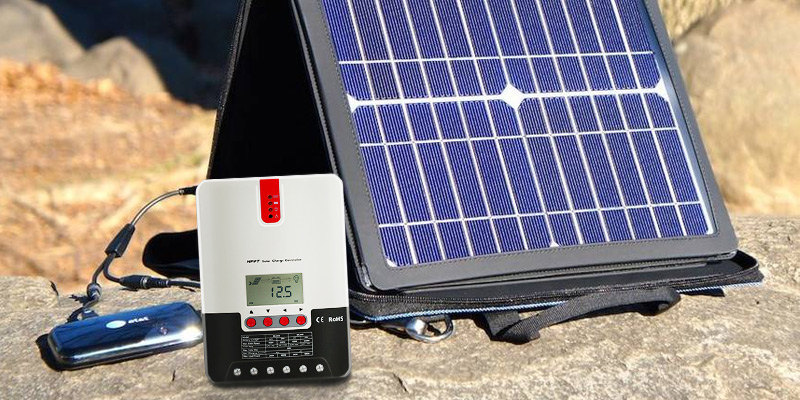
Additional Info
| Last updated price | $146.20 |
| Stock | In stock |
| ASIN | B082NHF78X |

What Is a Solar Charge Controller?
Today, more and more people are using solar energy for a huge variety of purposes, which include powering consumer electronics, upgrading home lighting systems, heating the water, warming up swimming pools. By installing solar power systems for houses, users significantly save on electric bills as well as increase their house property value.
If you decided to install a solar panel system for your home, you will need to pick the best components for it. A charge controller (charge regulator) is definitely one of the most important among them. In essence, it is a device, which regulates the voltage and current going from solar arrays and maintains proper charging voltage applied to the batteries. As the input voltage supplied from the solar module starts to increase, the charge regulator reduces the charging current correspondingly to prevent a battery overcharging.
By the way, here you can select the right solar panels for your off-grid or grid-tied solar power systems.
What Features to Compare
Type
One of the major factors to consider when selecting an appropriate solar charging controller is its type. There are two main types of charge regulators: PWM and MPPT with the difference laying in the charging method used. The operation of PWM charge controllers is based on Pulse-Width-Modulation technology, while MPPT regulators use the Maximum Power Point Tracking. The PWM algorithm reduces charging current correspondingly as a battery voltage reaches a certain setpoint to prevent overheating and gassing of the battery. This charging method maintains high average capacity of the battery and results in increasing the battery charge acceptance. The MPPT solar charge regulators adjust the voltage and current applied to the battery to a certain level, at which solar arrays provide maximum output power. MPPT controllers offer the best efficiency and can be used for solar systems with higher power.
Main Features
The first thing to consider here is the output voltage of solar arrays used in your system. Most solar power charge regulators have 12V and 24V input voltage options, thus you need to know the solar array output voltage defined by the equipment used. It's no less important to make sure the solar regulator has enough capacity to handle the amperage of the current coming from your solar array. For calculating this current value, you need to divide the value of the output power of your solar module by the battery voltage, thus you get an approximate current value in amperes supplied to the controller input.
Protection and Special Features
In addition to the mentioned factors, you need to pay special attention to the protection of controllers for using solar panel-produced power. Many models offer a variety of types of electric protection, including the protection from overheating, overcharging, overload, short circuit, reverse polarity. Generally, these protection features ensure reliable operation of the entire solar power system and prolong the battery life.
Finally, you can also select charge regulators that allow for manual voltage control, feature an automatic temperature compensation, have an LCD display, LED lighting, and USB ports.
FAQ:
Q: What is PWM?
A: The Pulse Width Modulation (PWM) is used as an efficient charging algorithm, which enables the batteries to be charged with less stress on them. Basically, this charging method slowly reduces the charging current according to the battery condition and recharging needs. It prevents batteries from heating and gassing, yet provides them with the maximum amount of electric energy in a short time.
Q: Do I need a solar charge controller/regulator?
A: It depends on the power of solar panels you're planning to install. Typically, small 10W solar modules can be used for trickle charging of large batteries without a solar charge regulator if the panels are equipped with blocking diodes to prevent reverse current. Using solar panels with the output power of 20W or higher with batteries always requires a charge regulator.
Q: Is temperature compensation an important feature?
A: Yes, it is. The temperature compensation feature adjusts charge control voltage based on battery temperature. The charge regulator that supports this feature increases regulation voltage when a battery is cold and decreases the voltage when the battery is warm. It's very important to prevent the battery from being overcharged.
Q: Can I use the battery with the solar charge controller connected?
A: Yes. Solar charge controllers are typically designed for a continuous usage and there is no need to disconnect the system during the battery use.
Q: What is an equalization mode?
A: The equalization charging is a special mode of battery charging. It makes all cells in the battery or battery bank of exactly equal charge. The equalization prolongs the battery life and provides better battery performance.
Q: What are the major benefits of MPPT solar charge regulators?
A: Usually, MPPT solar power charge controllers make it possible to draw 15-30% more power from your solar modules in comparison to PWM solar controllers. Despite the fact that MPPT solar charge regulators are typically more expensive than their PWM counterparts, they are an excellent investment for any solar power home system with the power exceeding 200 watts.
Q: How to measure operating current within the solar power system?
A: To measure the current supplied from solar arrays, proceed as follows:
1. Connect a solar panel to a charge regulator and a battery.
2. Make sure the multimeter is set to 10A.
3. Disconnect the positive cable connecting the battery and the charge regulator on the regulator side.
4. Measure the operating current by connecting the multimeter positive probe to the disconnected end of the positive cable from the regulator, and the negative probe to the positive battery terminal. This scheme allows measuring the current that flows from the panel to the battery.
Note that if the battery is fully charged it may not accept current, resulting in a low current reading.
Sources:
1. How to Choose the Right 12V Solar Charge Controller, eBay. July 1, 2014.
2. Frank Andorka How to choose the perfect charge controller, Solar Power World. September 16, 2014.
3. Everything you Need to Know About the Basics of Solar Charge Controllers, Northern Arizona Wind & Sun.
4. Bob Hopman Matching solar modules to MPPT charge controllers, Victron Energy. March 28, 2014.
5. Ben Gorman Sizing PWM Solar Charge Controllers, AltE Store.
6. Rinkesh Kukreja What is Solar Energy? Conserve Energy Future.
7. How do MPPT charge controllers work? CivicSolar.
8. Charge controller, Wikipedia.
9. John Rushworth Which solar charge controller: PWM or MPPT? Victron Energy. July 21, 2014.
10. What is a Solar Regulator/ Charge Controller, Energy Matters.


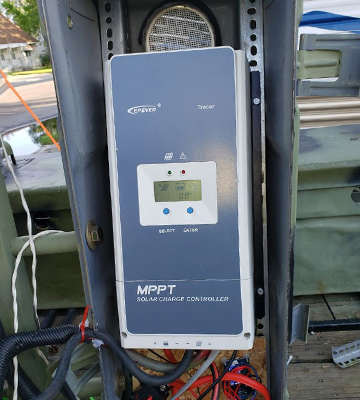
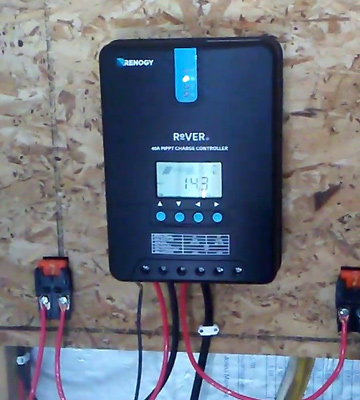
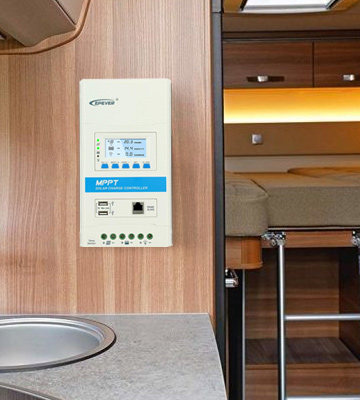
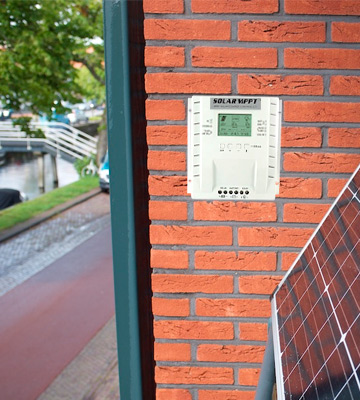


Your comment was successfully sent
Error! Please try again later